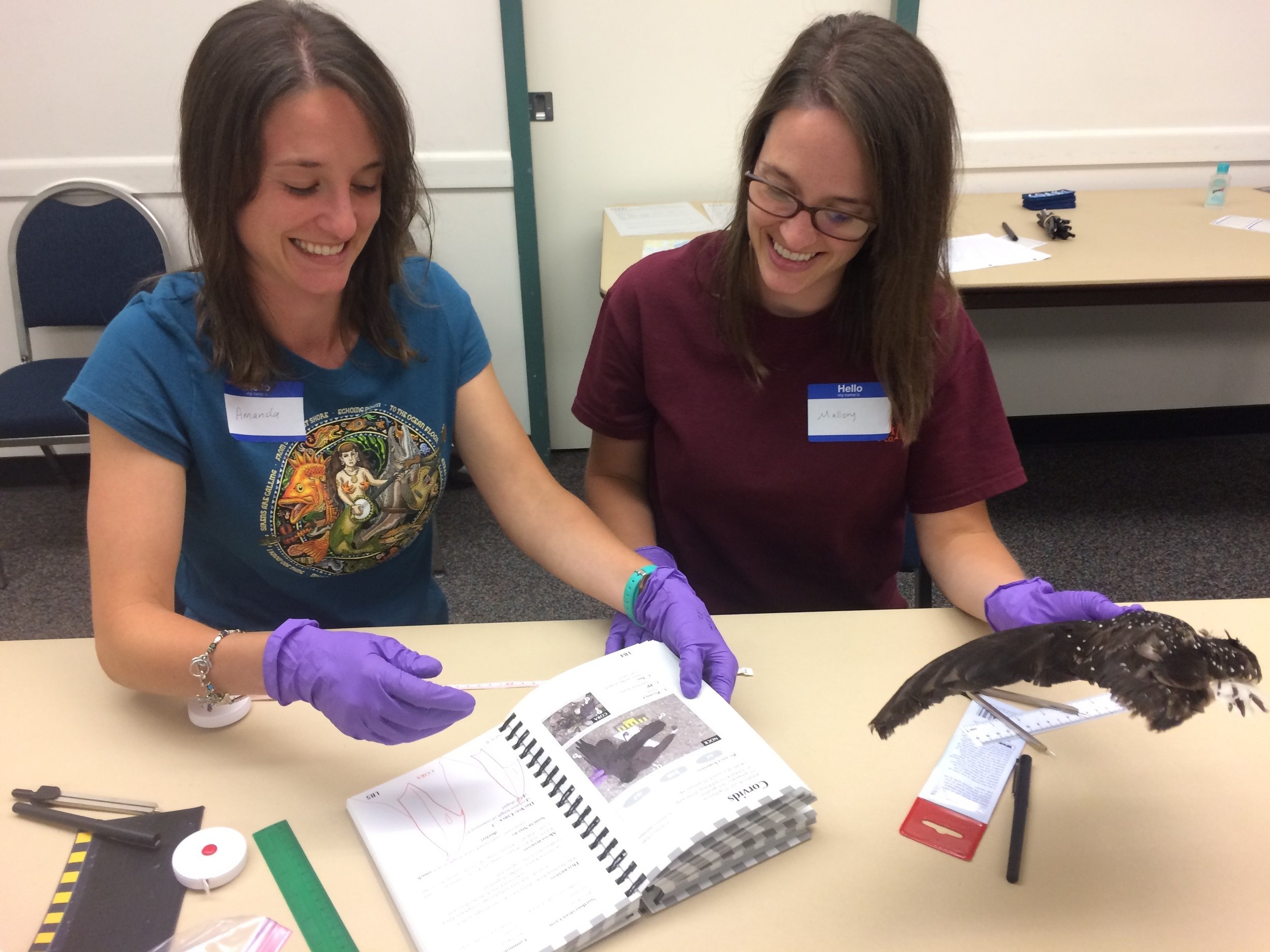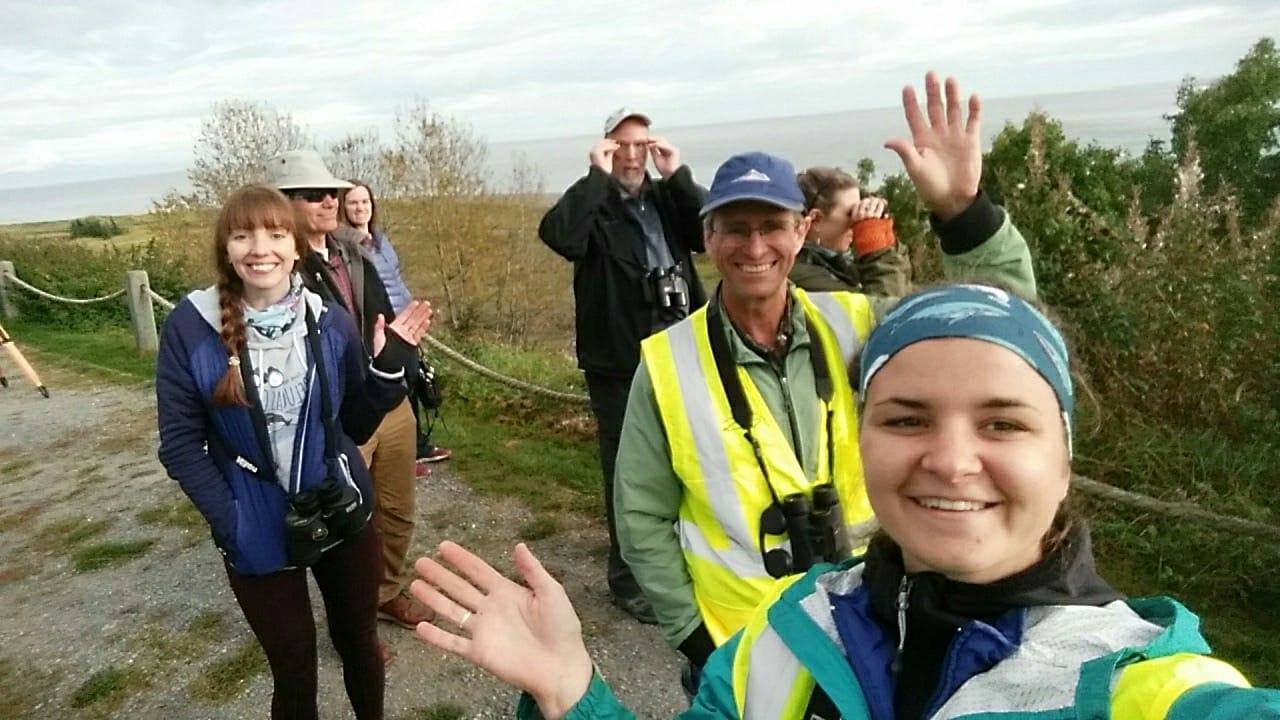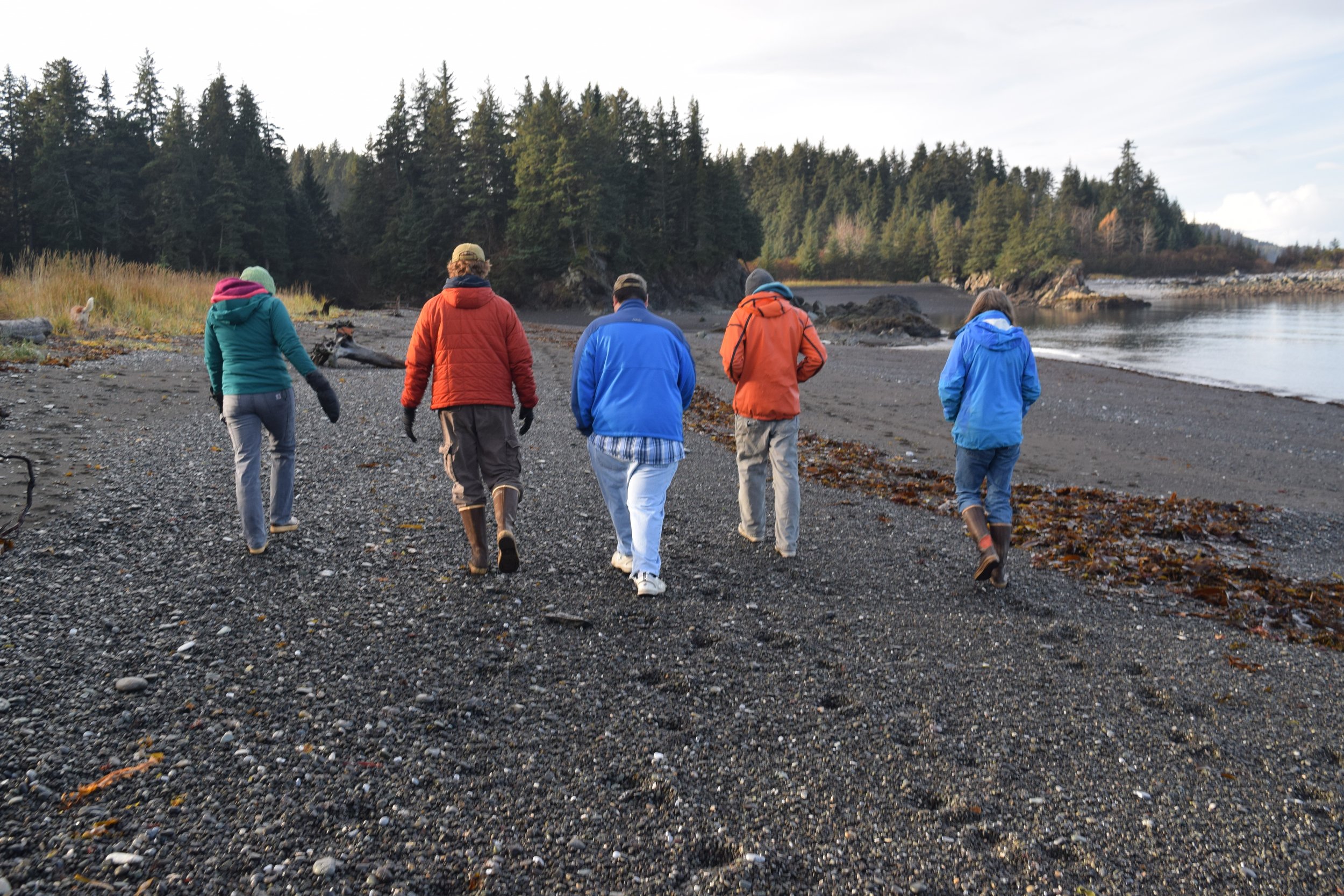<< Back to Education and Outreach
Developing Citizen Science Opportunities
It’s one thing to read about wildlife science and management activities, but how about getting to actually participate in a science project studying Alaska’s wildlife? We develop partnerships that allow our members the opportunity to be a Citizen Scientist and make a difference right here at home in Alaska. Our team is actively exploring funding for Citizen Science projects that will require meaningful time commitments by a large number of our members or the local community, participation in a training session lead by project researchers, collecting data for the researchers, and getting the opportunity for some amazing wildlife viewing.
Right now, we need two things to get these projects up and running:
1) dedicated volunteers who have the time to participate in the training and monitoring activities.
2) funding to support the project costs (such as equipment, researcher time, and data analyses).
If you have the interest and time, or are able to make a monetary donation to help get these programs started, please contact us! Read more about our past and upcoming Citizen Science programs below.
ALASKA BELUGA MONITORING PARTNERSHIP
The Alaska Beluga Monitoring Partnership (AKBMP) is a collaboration between Alaska Wildlife Alliance and several organizations that facilitate citizen science beluga monitoring in Alaska’s Cook Inlet. Together, we design standardized scientific monitoring protocols, train volunteers to support monitoring efforts, and coordinate shore-based beluga monitoring activities at various sites throughout Cook Inlet.
Cook Inlet beluga whales - known as the “canaries of the sea” because of the many different sounds they make - are critically endangered! Following a rapid population decline during the 1980s -1990s, the federal government designated the Cook Inlet beluga population as depleted under the Marine Mammal Protection Act (MMPA) in 2002 and endangered under the Endangered Species Act (ESA) in 2008. Once a valuable part of the regional Alaska Native subsistence diet, the Cook Inlet beluga population has not recovered and has declined by nearly 75% since 1979—from about 1,300 whales to around 280 today. The threats that belugas face are numerous, and even though some aquariums in the United States are focused on studying and rehabilitating belugas, the best way to support these beautiful mammals is to help them in the wild.
Volunteer for the AKBMP monitoring program by emailing alaskabmp@gmail.com with your information. For more information on the AKBMP project, visit the AKBMP website.
Our sea bird partnership with COASST
We have partnered with the Coastal Observation and Seabird Survey Team (COASST) to mobilize volunteer bird surveyors in Alaska’s coastal communities. These Citizen Scientists make a difference by collecting high quality beached bird data that is later used in natural resource management and conservation decisions.
We are looking for new participants in coastal communities across Alaska! Contact us if you are interested in learning more.
What is the Problem?
In Alaska, coastal communities are witnessing a changing marine environment, including rising ocean temperatures, shifting fisheries, and increases in disease and toxic algal blooms. Seabirds - occurring in Alaska by the millions - feel these pressures as well. In the last three years, at least three mass die-offs have occurred, from Southeast to the Bering, Chukchi and Arctic.
What is our Proposal?
BeringWatch, COASST, the Alaska Migratory Bird Co-Management Council and the US Fish and Wildlife Service have teamed up to work with coastal communities to track seabird die-offs in Alaska. Die-off Alert (DOA) is a way for hundreds of community members throughout coastal Alaska to gather, record and share information on seabird die-offs as they happen.
How Does Die-off Alert Work?
Die-off Alert trains and equips participants to make local observations in a single, in-person 1.5 hour session. If a die-off event hits your coastline, participants are ready to survey beaches, find carcasses, take photographs and document the location. COASST reviews the photos to determine numbers and species. All information is returned to the affected communities. Die-off Alert also ‘trains trainers’ who want to conduct training events in their own communities.
Goals of Die-off Alert
Die-off Alert bears witness to the changes in coastal Alaska. Observations collectively reveal the species, quantity, geography, and timing of seabird die-offs. We are committed to making the data and analyses available to communities so that locally-collected information can be used in decision-making and resource management.
Die-off Alert Resources for Participants
Quarterly e-newsletters describing ocean conditions, and highlighting seabird and participant stories.
Alerts about unusual mortality reported in your area, including information about ecosystem health, and any threats to human health.
Links to the COASST program, and information about the "normal baseline" (which birds are expected to wash in when) in your region.
Contact us if you are interested in learning more and becoming part of this important citizen scientist team!
Belugas COUNT!
In 2018, we began partnering with NOAA Fisheries and others in the second annual Belugas Count! event, held September 15, 2018. This all-day citizen science celebration brought together members of the public to study and learn about the endangered Cook Inlet beluga whales, while fostering local pride, awareness, and stewardship. It was a collaboration among a variety of federal and state agencies, local and national organizations, as well as individuals. AWA staffs the beluga whale viewing and counting station located at the Kenai River. Stay tuned for opportunities to participate in this year’s Belugas Count! event by signing up for our newsletter (scroll below and subscribe to stay in the know!) or following us on social media (Facebook and Instagram).
Other opportunities
We believe in supporting management and organizational allies working to better understand Alaska’s wildlife. Below are existing opportunities currently available through other organizations (not sponsored or organized by AWA) that you can help with today.
These programs are all great ways to participate in science at your leisure. If you want to be even more involved than those “once in a while” opportunities and often get outdoors often to contribute to science, let us know! We are always looking for engaged partners.
Terrestrial Mammals
Help study wolves and other carnivores on the Alaska Peninsula by collecting and sending in samples of hair and whiskers from all carnivores, cut as close to the skin as possible, whether newly harvested or from much older hides: https://www.fws.gov/refuge/Alaska_Peninsula/Help_with_Research_Projects.html
Help understand the distribution, seasonal activity patterns, and the timing of reproduction in bats in Alaska by:
reporting your bat observations (live or dead): https://www.adfg.alaska.gov/index.cfm?adfg=citizenscience.batsobservations
participating in acoustic driving surveys: https://www.adfg.alaska.gov/index.cfm?adfg=citizenscience.batsacousticcommunities
Help determine current distribution, abundance, and basic life history traits of Alaska hares by reporting your sightings: https://www.adfg.alaska.gov/index.cfm?adfg=citizenscience.hareobservation
Marine Mammals
Help figure out why Steller sea lions continue to decline in the Aleutian Islands by classifying photographic images: https://www.zooniverse.org/projects/sweenkl/steller-watch
Help reduce lethal ship strikes of whales by viewing whale safety zones, and reporting sightings of live, dead, or distressed animals: http://www.whalealert.org/
Birds
Help determine trends and changes in bird populations by participating in organized bird counting events such as the International Migratory Bird Day in May and the Christmas Bird Count in December: https://www.fws.gov/refuge/Alaska_Peninsula/Help_with_Research_Projects.html
Insects
Help inventory pollinators on the Alaska Peninsula by collecting bees and wasps: https://www.fws.gov/refuge/Alaska_Peninsula/Help_with_Research_Projects.html
Help advance the understanding of bark beetles, which will help protect forests and the species that depend upon them: http://www.backyardbarkbeetles.org/
Habitat
Help compile a record of the amount and types of marine debris in the environment so managers can track the progress of existing marine debris prevention initiative and identify targets for future mitigation efforts: https://marinedebris.noaa.gov/research/marine-debris-monitoring-and-assessment-project
















